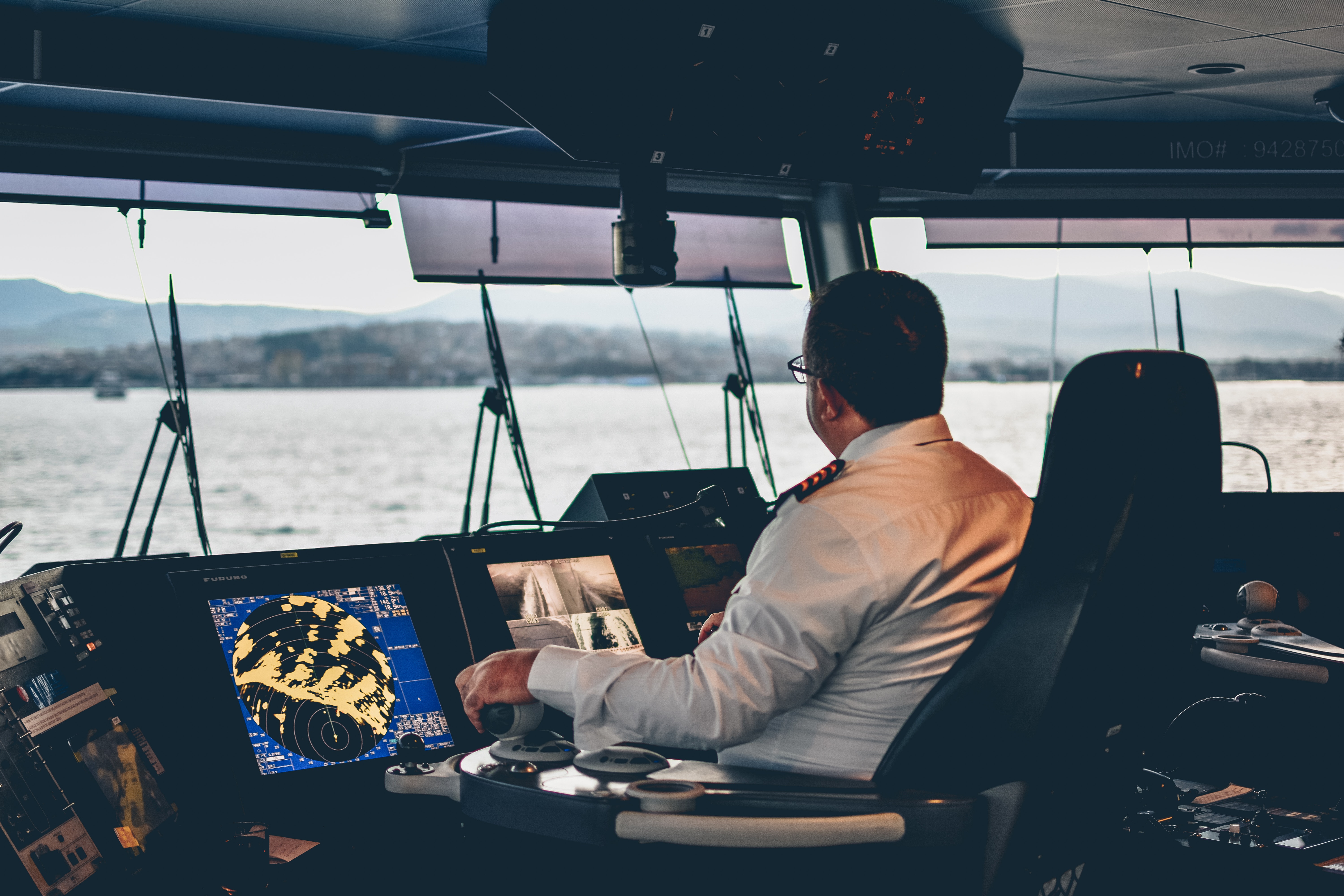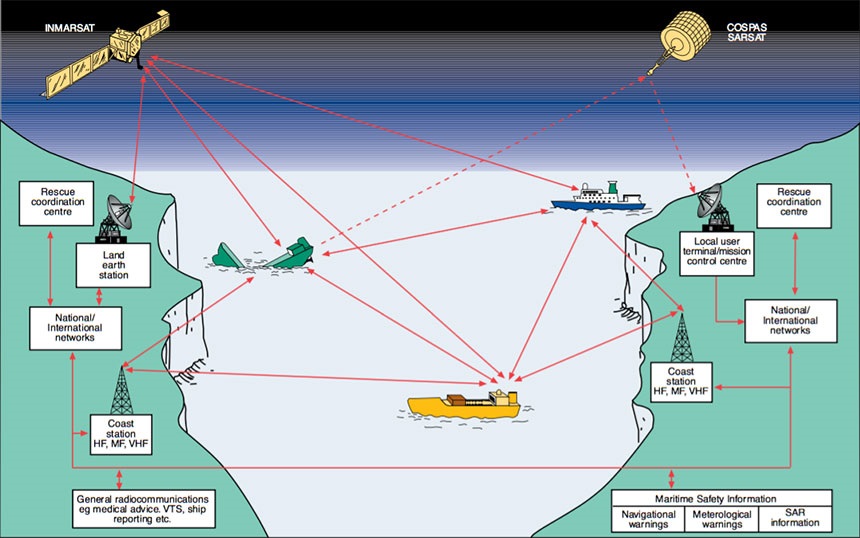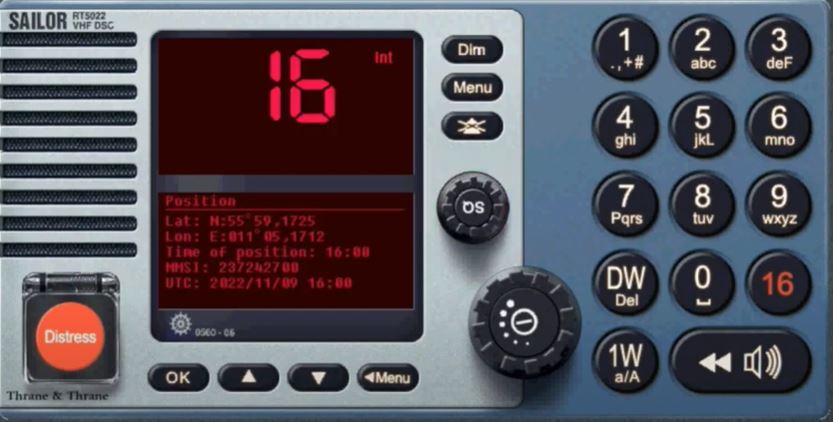DLP-MT-LPCOM10-VHF Safety and Distress call
In this learning path you will learn about Very High Frequency (VHF). Safety and Distress call will be carried out
What is the distress call on VHF radio?
Which VHF channel is for distress safety and calling?
How do you make a VHF distress call?

VHF radio is widely used for short-range communication between ships, coast stations, and aircraft. It is also the primary means of distress, urgency, and safety calls in the GMDSS. VHF radio has several advantages, such as high clarity, low interference, low power consumption, and easy installation

Marine VHF radio explanation
Marine radio was the first commercial application of radio technology, allowing ships to keep in touch with shore and other ships, and send out a distress call for rescue in case of emergency. Guglielmo Marconi invented radio communication in the 1890s, and the Marconi Company installed wireless telegraphy stations on ships beginning around 1900. Marconi built a string of shore stations and in 1904 established the first Morse code distress call, the letters CQD, used until 1906 when SOS was agreed on. The first significant marine rescue due to radio was the 1909 sinking of the luxury liner RMS Republic, in which 1,500 lives were saved. This and the 1912 RMS Titanic rescue brought the field of marine radio to public consciousness and marine radio operators were regarded as heroes
The first marine radio transmitters used the longwave bands. During World War I amplitude modulation was developed, and in the 1920s spark radiotelegraphy equipment was replaced by vacuum tube radiotelephony allowing voice communication. Also in the 1920s, the ionospheric skip or sky wave phenomenon was discovered, which allowed lower power vacuum tube transmitters operating in the shortwave bands to communicate at long distances.
Types of equipment
Sets can be fixed or portable. A fixed set generally has the advantages of a more reliable power source; higher transmit power, a larger and more effective antenna and a bigger display and buttons. A portable set (often essentially a waterproof, VHF walkie-talkie in design) can be carried on a kayak, or to a lifeboat in an emergency, has its own power source and is waterproof if GMDSS-approved. A few portable VHFs are even approved to be used as emergency radios in environments requiring intrinsically safe equipment (e.g. gas tankers, oil rigs, etc.).
Voice-only
Voice only equipment is the traditional type, which relies totally on the human voice for calling and communicating. Many lower priced handheld units are voice only as well as older fixed units.
Digital selective calling
DSC equipment, a part of the Global Maritime Distress Safety System (GMDSS), provides all the functionality of voice-only equipment and, additionally, allows several other features:
The ability to call another vessel using a unique identifier known as a Maritime Mobile Service Identity (MMSI). This information is carried digitally and the receiving set will alert the operator of an incoming call once its own MMSI is detected. Calls are set up on the dedicated VHF channel 70 which DSC equipment must listen on continuously. The actual voice communication then takes place on a different channel specified by the caller.
A distress button, which automatically sends a digital distress signal identifying the calling vessel and the nature of the emergency
A built in GPS receiver or facility to connect an external GPS receiver so that the user’s location may be transmitted automatically along with a distress call.
When a DSC radio is bought new the user will get the opportunity to program it with the MMSI number of the ship it is intended to be used on. However to change the MMSI after the initial programming can be problematic and require special proprietary tools. This is allegedly done to prevent theft.

Watch this video in real VHF daily test call on board ORTZE EA2421 equipment
The distress call Mayday may be used only if the boat is threatened by grave and imminent danger – for example, sinking or on fire – and immediate assistance is required. This distress call has absolute priority over all other transmissions and may be transmitted only on the authority of the skipper or the person
responsible for the safety of your vessel.
A Mayday call on one of the distress frequencies will attract the attention of land stations and other vessels in your area. Stay calm, explain the problem and give position and distress information clearly.
“Mayday, Mayday, Mayday”
“This is [vessel name and/or call sign if you have one]” (spoken three times)
“Mayday [vessel name and/or call sign if you have one]”
“My position is … [Details of the ship’s position]”
“My vessel is … [Nature of distress and assistance required is identified]”
“I have … [Other information including number of persons on board]
This call can be repeated as often as necessary until answered. If no answer is received on distress frequencies, repeat the call on any frequency which might attract attention.
ORTZE
EABC
224496000
43-20,4 N
001-56,4 W
Fire on board
Immediate assistance
4 persons on board
Evacuating to liferaft
- Mayday Mayday Mayday
- This is ORTZE, ORTZE, ORTZE
- Callsign: ECHO ALFA BRAVO CHARLIE
- MMSI: 224496000
- Mayday
- ORTZE
- My Position Is: Four Three Degrees Two Zero Decimal Four North, Zero Zero One Degrees Five Six Decimal Four West
- We have a fire onboard
- Require Immediate assistance
- Four persons onboard
- Evacuating to liferaft
- Over
Please answer the multiple choice questions in this quiz, if you can't answer some of the questions, go again to activity and try again.
Resource information